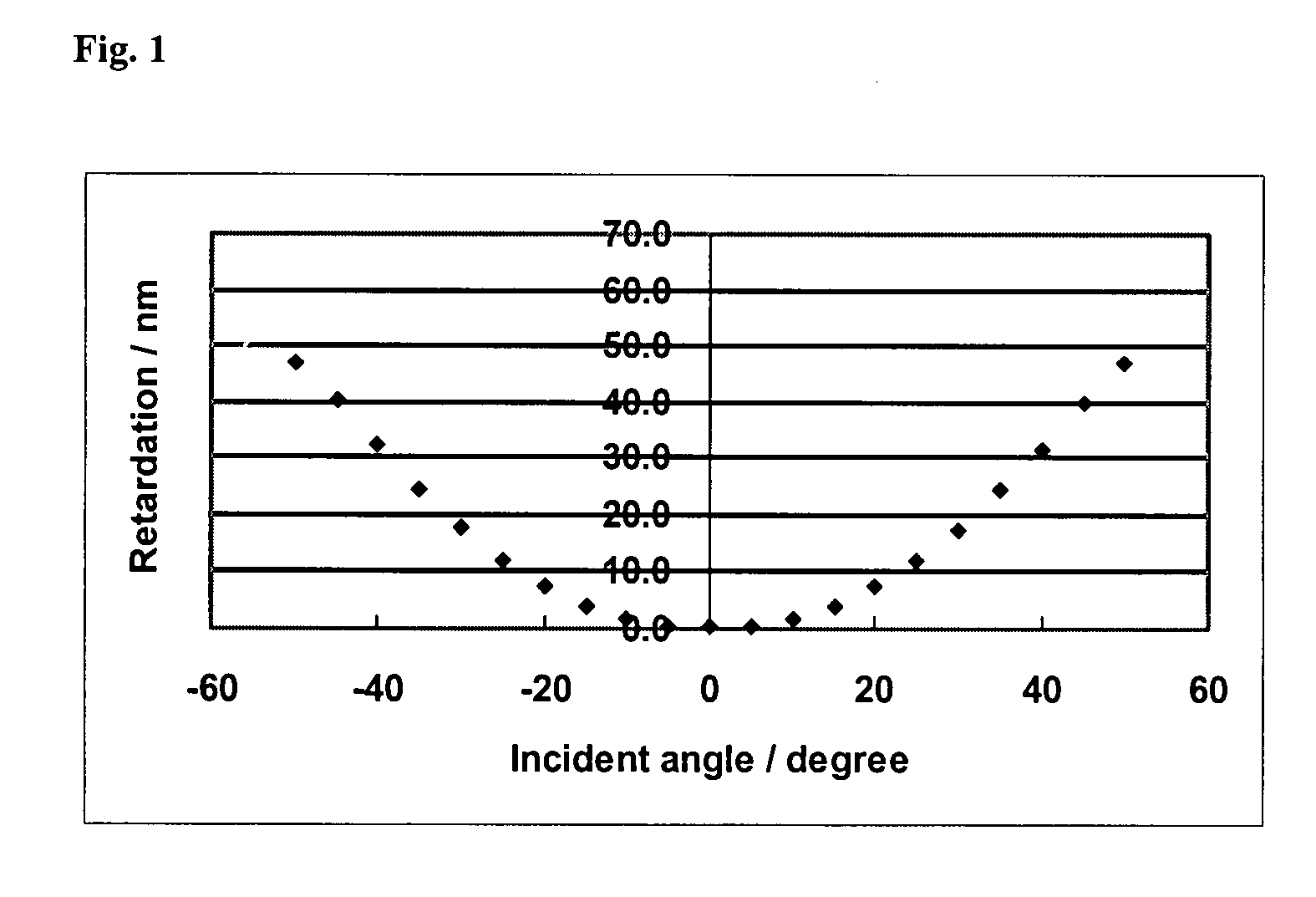Polymerizable liquid crystal composition
a liquid crystal composition and polymerizable technology, applied in the field of polymerizable liquid crystal composition and liquid crystal film, can solve the problems of inability to obtain uniform alignment properties, insufficient functions of only one polymerizable compound, etc., to prevent productivity from being deteriorated, improve curing properties, and increase regularity
- Summary
- Abstract
- Description
- Claims
- Application Information
AI Technical Summary
Benefits of technology
Problems solved by technology
Method used
Image
Examples
example 1
(Preparation of MIX1)
[0206]The compound (1-1-3) and the compound (2-1-3) were mixed at a weight ratio of 65 / 35, and the resulting composition was designated as MIX1. The compound (3-1-1) in a weight ratio of 0.05 and a polymerization initiator, IRGACURE 907, in a weight ratio of 0.03 were added to MIX1. Toluene was added to the composition to prepare a polymerizable liquid crystal composition (1) having a content of the solvent of 75% by weight.
[0207]Polyamic acid for low pretilt angle (for homogeneous alignment) (Lixon Aligner PIA-5310, produced by Chisso Corp.) was coated on a glass substrate (S-1112, produced by Matsunami Glass Industries, Ltd.), and after drying at 80° C. for 3 minutes, baked at 210° C. for 30 minutes. The polymerizable liquid crystal composition (1) was coated on the glass substrate having polyamic acid by a spin coating method. The substrate was heated to 70° C. for 3 minutes and cooled at room temperature for 3 minutes to form a coated film, from which the so...
example 2
[0208]The compound (1-1-3) and the compound (2-1-3) were mixed at a weight ratio of 78 / 22, and the resulting composition was designated as MIX2. A polymerizable liquid crystal composition (2) was prepared in the same manner as in Example 1 except that the compound (3-1-1) in a weight ratio of 0.10 was added to MIX2, and a liquid crystal film was obtained with the polymerizable liquid crystal composition (2) in the same manner as in Example 1. The liquid crystal film exhibited uniform homeotropic alignment. The measurement of retardation of the film provided a curve similar to the curve shown in FIG. 1. The polymerizable liquid crystal composition (2) had good storage stability, and substantially no change in color thereof was observed. The polymerizable liquid crystal composition (2) also suffered no change in rotation viscosity of the solution, which indicated good storage stability.
example 3
[0209]The compound (1-2-11) and the compound (2-1-3) were mixed at a weight ratio of 78 / 22, and the resulting composition was designated as MIX3. A polymerizable liquid crystal composition (3) was prepared in the same manner as in Example 1 except that the compound (3-1-1) in a weight ratio of 0.10 was added to MIX3, and a liquid crystal film was obtained with the polymerizable liquid crystal composition (3) in the same manner as in Example 1. The liquid crystal film exhibited uniform homeotropic alignment. The measurement of retardation of the film provided a curve similar to the curve shown in FIG. 1. The polymerizable liquid crystal composition (3) had good storage stability, and substantially no change in color thereof was observed. The polymerizable liquid crystal composition (3) also suffered no change in rotation viscosity of the solution, which indicated good storage stability.
PUM
| Property | Measurement | Unit |
|---|---|---|
| Percent by mass | aaaaa | aaaaa |
| Percent by mass | aaaaa | aaaaa |
| Percent by mass | aaaaa | aaaaa |
Abstract
Description
Claims
Application Information
 Login to View More
Login to View More - R&D
- Intellectual Property
- Life Sciences
- Materials
- Tech Scout
- Unparalleled Data Quality
- Higher Quality Content
- 60% Fewer Hallucinations
Browse by: Latest US Patents, China's latest patents, Technical Efficacy Thesaurus, Application Domain, Technology Topic, Popular Technical Reports.
© 2025 PatSnap. All rights reserved.Legal|Privacy policy|Modern Slavery Act Transparency Statement|Sitemap|About US| Contact US: help@patsnap.com



